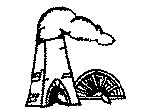
Long Pond Ironworks
 |
History of Long Pond Ironworks |
|
Long Pond's History
Long Pond After the Ironworks
Long Pond Today
Master Plan
Hasenclever's Germans
- Excerpted from “Whatever Happened to Peter Hasenclever’s
Germans?” by Susan Deeks
Long
Pond Brochure (pdf, 600kb)
Long Pond Ironworks is a microcosm of our industrial and cultural heritage. The site takes its name from the nearby "Long Pond," a translation of the Native American name for Greenwood Lake. Set alongside the swiftly flowing Wanaque, or "Long Pond" River, the site offered a perfect combination of natural resources -- water power, woods and nearby ore -- for making iron.
Long Pond Ironworks was founded in 1766 by the German ironmaster Peter Hasenclever. With financial backing from British investors, Hasenclever purchased the existing Ringwood Ironworks as well as huge parcels of land, including the 55,000-acre Long Pond Tract. He also imported more than 500 European workers and their families to build ironmaking plantations at Ringwood, Long Pond and Charlottenburg in New Jersey and at Cortland in New York. From the wilderness they carved roads; built forges, furnaces and homes; and created supporting farms. At Long Pond, they dammed the river in order to provide water power to operate the air blast for a furnace and a large forge.
After a few short years, Hasenclever's investors began to view his plans as too grandiose and expensive. He was replaced as ironmaster in 1769 by the Swiss ironworks manager Johann Jacob Faesch, who later established the Mt. Hope Ironworks in Morris County, and later by the Scottish scientist and inventor Robert Erskine. At the outbreak of the Revolutionary War, Erskine took up the American cause, serving as surveyor-general to General George Washington. He also kept the ironworks in operation, and they became important suppliers of armaments and goods to the Continental Army.
After Erskine's death in 1781 the ironworks changed hands until they were acquired in 1807 by the Ryersons, owners of the Pompton Ironworks. The family retained ownership until 1853, and the Ryerson Steel Company continues to operate from Chicago to this day. In 1853, the American industrialists Peter Cooper and Abram S. Hewitt purchased the Long Pond works and operated it as part of their vast, Trenton-based iron empire for the next 30 years. During the Civil War, Cooper and Hewitt built two new furnaces, waterwheels and a casting house at Long Pond, whose iron was found to be especially well suited to making gun barrels for the Union Army. By the 1870s, the Pennsylvania coal fields and iron mines of the Great Lakes region had become a more cost-effective source of fuel and ore. Although Hewitt planned cost-saving improvements to keep his northern New Jersey ironworks in operation, on April 30, 1882, the last fires were blown at Long Pond Ironworks, ending more than 120 years of ironmaking history.
Although iron was no longer made at Long Pond after 1882, mining continued as a major industry. Through the turn of the century, residents of Hewitt, the village that had grown up around the ironworks, continued to adapt to changing times. A new school and church were built between 1895 and 1905, and a steam-powered sawmill was constructed in 1913. In addition, ice-cutting on Greenwood Lake and recreation became key local industries. By the middle of the 20th century, however, these industries were in decline, and residents of Hewitt began moving away to find opportunity elsewhere. In 1957, the Ringwood Company donated the Long Pond property to the State of New Jersey, and in 1987, Long Pond Ironworks was dedicated as a New Jersey State Park. Administered by the NJ Department of Environmental Protection, Division of Parks and Forestry, and maintained by the Friends of Long Pond Ironworks, Inc., the Long Pond Ironworks Historic District stands as a testament to the vital role our region has played in our local, state and national history.
Long Pond Ironworks tells a fascinating tale of ironmasters who built and developed the iron industry in the Highlands. Their contributions to history in times of peace and times of war reach far beyond the local economy. These nearly forgotten chapters of history need to be retold and remembered. Within the 175-acre Long Pond Ironworks Historic District lie the ruins of three iron blast furnaces, including the original Colonial-era furnace constructed in 1766, and two larger furnaces built for Civil War production; evidence of iron forges; remains of waterpower systems; and a variety of workers' homes and commercial buildings that were critical parts of the ironworking village. Long Pond also illustrates the evolution of ironmaking technology, as shown in the remains of the three successive furnaces, the ore roaster and the hydropower systems. The continual search for more efficient operations and materials is a story of industrial ingenuity at its best.
The workers' story at Long Pond is a saga of immigration, hard work and adaptation to changing times. This Colonial plantation-turned-company town grew, thrived and declined along with the fortunes of the iron industry in the Northeast. The personal and community struggle to adapt and change with an evolving economy is a theme in our cultural heritage that we can still learn from.
A Master Plan for the Long Pond Ironworks National Historic Landmark has been developed by the N.J. Division of Parks and Forestry, with help from the Friends of Long Pond Ironworks. The plan calls for the restoration of structures within the Historic District; stabilization of many of its ruins; ongoing archeological excavation and research; and interpretation of the site to the public. You are welcome to become part of this process by taking advantage of our public tours and by becoming a member. Non-members are welcome to attend our monthly meetings to learn more, or call our information line.
FOLPI Information Line (973) 657-1688
Calendar | News | History | Museum | Photo Gallery | Home | Join | Panoramas | Get Involved | Contact | Links